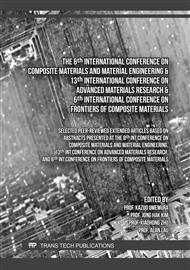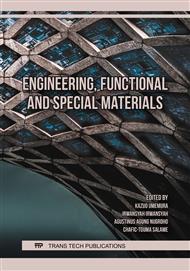p.125
p.133
p.141
p.147
p.155
p.161
p.167
p.173
p.185
Low-Temperature Fracture Performance of Polymerized Sulfur Modified Asphalt Concrete Mixtures
Abstract:
In this research, asphalt concrete (AC) mixtures modified by polymerized Sulfur were prepared. PG58-22 bitumen was used as the base binder for the mixtures along with crushed siliceous aggregate. The base binder was replaced by 20%, 30%, and 50% ratios with polymerized Sulfur in the modified mixtures while the reference mix was fabricated with 0% binder replacement. Single edge notched-beam fracture tests (SE(B)) were carried out in a temperature range of 0 °C to-20 °C on the AC beam specimens. Load-displacement curves were obtained from the experiments and the fracture energy of the mixtures could be determined. It was revealed that modifying the mixtures with polymerized Sulfur could improve the load bearing of the beam specimens as higher peak load values were recorded at fracture. However, fracture failure of the AC beams occurred at lower values of displacement addressing further embrittlement of the mixtures due to replacement of the base binder. Higher contents of polymerized Sulfur in the mixtures resulted in higher magnitudes of fracture energy as a general trend in this research addressing an improved resistance to low-temperature cracking.
Info:
Periodical:
Pages:
155-160
Citation:
Online since:
August 2023
Authors:
Price:
Сopyright:
© 2023 Trans Tech Publications Ltd. All Rights Reserved
Share:
Citation:



